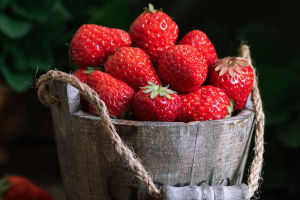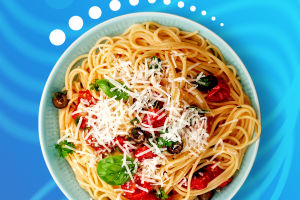The biggest difference between baking and other diets is the creativity of recipes. The baking process needs to strictly follow the recipe, and it is accurate to how many grams.
Therefore, there are actually many rules in baking that must be followed, otherwise, it is likely to affect the final result. Here are six tips to help you make better-baked goods.
1. The temperature of the materials should be the same when mixing
There are many materials used in baking, and the storage of some materials has certain temperature requirements, such as butter, eggs, or milk, which are usually placed in the refrigerator.
Usually, the temperature of the materials mixed with these materials is inconsistent, so we need to prepare the materials in advance so that their temperatures are consistent.
Why do you need a consistent temperature? An example: When you want to pour warmer cream over cold chocolate, you will find that the cocoa butter separates.
That is to say, when two different materials at different temperatures are mixed, the most likely situation is incomplete mixing or even separation.
2. Buy a high-quality oven and bakeware
An indispensable step for baking products is to bake them in the oven, and because of the strictness of baking, they pay attention to the temperature, time, and heating surface during baking, so it is very important to buy a high-quality and comprehensive oven.
A baking pan is also an important tool when baking. Poor baking pans do not conduct heat effectively, resulting in inefficient baking of your baked goods.
3. Don’t use too little butter or flour
Some steps in baking require buttering and flouring the container to prevent sticking to the container. Don't just apply a thin layer when doing this step, you need to apply a little more, taking care of every nook and cranny.
When spreading the flour, you can cover the container with flour first, and then pour it out, be careful not to touch it with your hands, so as not to get the spread flour.
4. Precise weighing of ingredients
Successful roasting means eliminating potential errors as much as possible, which means making sure your measurements are accurate.
For example, a cup of flour can vary in volume by up to 50g, which means the difference between buttery and flaky, dense and sticky. A good electronic scale can save all the guesswork and the need to clean measuring cups.
Don't forget to adjust the weight of your mixing bowl.
5. Keep the ingredients fresh
Most ingredients used in baked goods, such as baking soda, baking powder, yeast, and flour have a relatively short shelf life. So if you don't bake often, buy them in small quantities so they don't sit in your cupboard and stink quietly.
If you're not sure how fresh an ingredient is, buy a new one or test it. To check the freshness of the baking powder, pour a small amount of boiling water into it.
If it bubbles up, it's still fresh and the flour should smell fresh and feel light. Fresh yeast dissolves in warm water and foams after a few minutes.
6. Strict order in which materials are placed
The production process of baking is also the mixing process of materials. Since they will all be together in the end, why not mix them all at once?
In fact, this is absolutely impossible, because baking is not a simple mixing, and many processes in the middle are very important, such as the fermentation of the dough, the whipping of the cream, etc. These all take time. For example, butter and sugar should be mixed together before adding eggs.
Why? The fat in butter retains air and expands when you stir it. During the cream-making process, sharp sugar granules slice the butter into thin slices, creating air pockets that ultimately enhance the texture of the pastry.
Skip this step and your end result will be dense and heavy.


